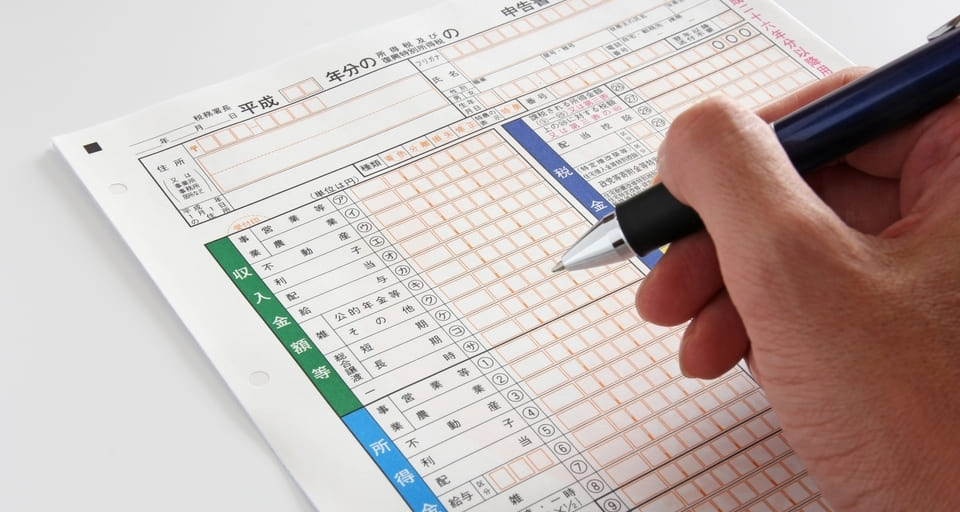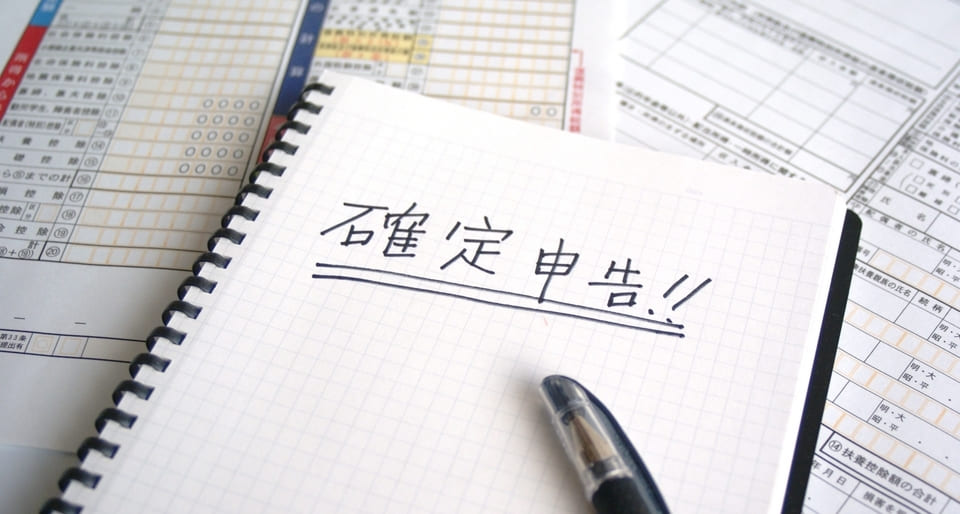Some foreigners who live and work in Japan are required to file a final tax return. However, not all people do that.
This article also explains who needs to file a tax return, as well as the specific procedure and documents to submit. Please use this as a reference so that you will not miss any tax payments.
Person Who Needs to File Tax Returns

Even if you are a foreigner, you may need to file a tax return if you have earned a salary in Japan. Specifically, a tax return is required if any of the following is true:
- People with salary income
- People who have a balance after deducting income deductions from miscellaneous income for public pensions, etc.
- People with retirement income
- People who have a balance as a result of performing a specific calculation
Here, we will explain in detail about “people with salary income” and “people who have a balance as a result of performing a specific calculation.”
People with Salary Income
In general, most people with salary income do not need to file a tax return because the company makes year-end adjustments.
However, if you have a balance as a result of the following calculations and you meet certain conditions, you must do it.
- Deduct income deductions from total income (calculate income taxable)
- Multiply the calculation result of 1 by the tax rate of income tax (calculate the amount of income tax)
- Subtract the dividend deduction amount and Special Credit for Loans from the income tax amount of 2.
As a result of this calculation, you will have to file a tax return if the balance arises, and you meet one of the following conditions.
(1) Salary income exceeds 20 million yen
(2) You receive the salary from one place, and all of the salaries are subject to withholding tax, and the total amount of various income amounts (excluding salary income and retirement income) exceeds 200,000 yen
(3) You receive salaries from two or more locations, and all of the salaries are subject to withholding tax, and the total amount of various income amounts (excluding salary income and retirement income) and salary that has not been adjusted at the end of the year exceeds 200,000 yen
* You don’t need to file a tax return if you meet both conditions:
a) the total amount of salary income minus the total amount of income deductions (excluding miscellaneous loss deductions, medical expenses deductions, donation deductions, and basic deductions) is less than 1,500,000 yen
b) the total amount of various income (excluding salary income and retirement income) is less than 200,000 yen.
(4) If you are an officer of a family company or his/her family member, etc. and received payments from the company, such as interest on loans, rental fees for shops and factories, usage fees for machinery and equipment, etc.
(5) You received deferral and/or refund of income tax withholding tax for a salary under the Disaster Reduction Act.
(6) You work at a foreign embassy in Japan or are household employee, etc. and are not subject to withhold income tax, etc. when receiving salary payments
Quoted and translated from: 確定申告が必要な方|国税庁
If you are receiving salaries from multiple companies or are doing side jobs, you should check whether you need to file a tax return or not.
People Who Have a Balance As a Result of Performing a Specific Calculation
If you do the following calculation and have a balance, you need to file a tax return.
- Deduct income deductions from total income (calculate income taxable)
- Multiply the calculation result of 1 by the tax rate of income tax (calculate the amount of income tax)
- Subtract the dividend deduction amount from the income tax amount of 2.
It is similar to the calculation explained in the section “Persons with Salary Income,” but please note that only the deduction amount for dividends is subtracted at step 3 here.
These are the people who need to file a tax return. For details on income tax, see this article.
Procedure for Final Tax Return

Here, we will explain the procedure for filing a tax return and the points to note. Please note that the explanation here assumes “non-permanent residents.”
A person who has an address in Japan or who has a residence for at least one year to date is called a resident. And among these residents, those who meet both of the following conditions are “non-permanent residents.”
- Not having Japanese nationality
- The total period of having an address or residence in Japan in the past 10 years is 5 years or less
Many foreign residents in Japan fall into non-permanent residents, so we will focus on them here.
Non-permanent residents will file a tax return if they meet the conditions explained in the previous section. Also, income earned outside Japan, such as in your home country, is subject to tax regardless of whether or not the money is transferred to your Japanese account, so unexpectedly many people will need to file tax returns.
Preparation for Final Tax Return
As a general rule, the tax return for the year should be done from February 16 to March 15 of the following year. Please note that the deadline changes depending on the day of the week.
The basic flow of the final tax return is obtaining a final tax return form and fill in the necessary information according to the contents. Also, please prepare the following documents when submitting the form to the tax office.
- Identity verification documents
- Personal seal
- Items that show your account number (such as a passbook or cash card in the name of the person)
- Documents that show your income (withholding slip, payment record, etc.)
- Documents to receive deduction (if you receive it)
Please prepare two types of identity verification documents, one that allows you to check your My Number and one that identifies you such as a residence card or passport. Also, regarding personal seals, Shachihata cannot be used. If you are a foreigner and do not have a seal, use a signature instead.
If you want to receive a deduction, you will need documents showing that you are a deductible person. For example, in the case of deductions for medical expenses, you can use statement slips for medical expenses and receipts for transportation expenses.
And, there are two types of final tax return forms, “A” and “B.” However, if you are not sure which to choose, ask a person who is familiar with it or the consultation desk described later.
Submitting Tax Return Documents
Once you have the necessary documents, submit them to the tax office. There are 3 ways to do it.
- Bring directly to the tax office
- Use e-tax
- Send to the tax office by mail
If you bring the necessary documents directly to the tax office, you can fill in the tax return form while asking the staff about any questions. Especially if it is your first time to file a tax return and are worried, we recommend you choose this method.
You can find the location of the tax office at the webpage below.
The tax office at the time of tax return is very crowded, and the waiting time will be long. So please make sure you have enough time when you go there.
On the other hand, e-tax is an electronic filing and tax payment system provided by the National Tax Agency. With this method, you can file a tax return from your home at any time. However, it may be a little difficult to prepare because you need to obtain a number called the User Identification Number before using it.
Another way to file a tax return without going to the tax office is to submit by mail. You can also do this at your timing.
The above is the outline of the final tax return and the submission method. If you have any questions when filing your tax return, please contact the following consultation desk. The following page is in English.
Conclusion
This time, we explained the procedures for filing final tax returns and how to submit documents.
Even foreigners sometimes need to file a tax return. If you are doing it for the first time, please refer to this article.



